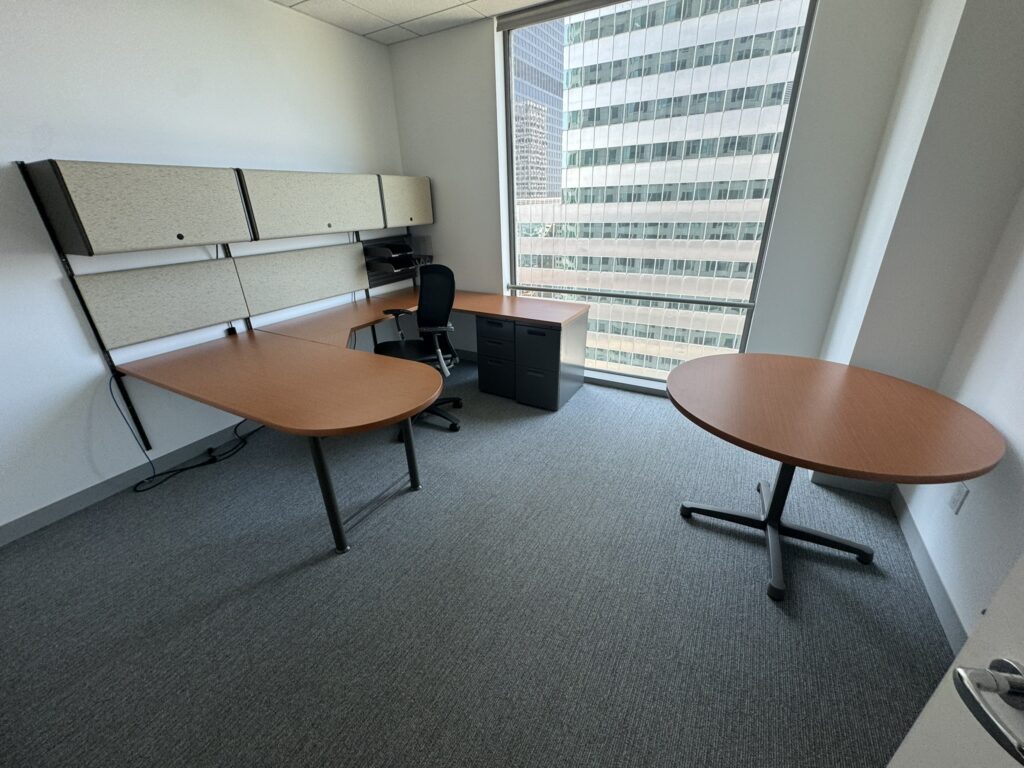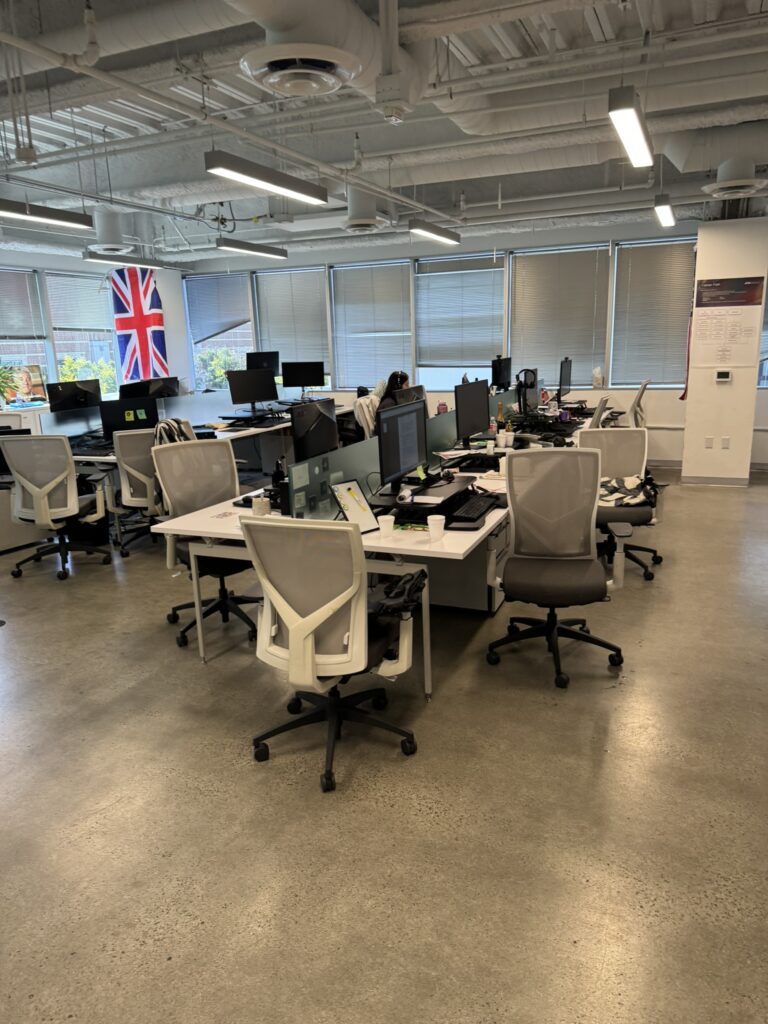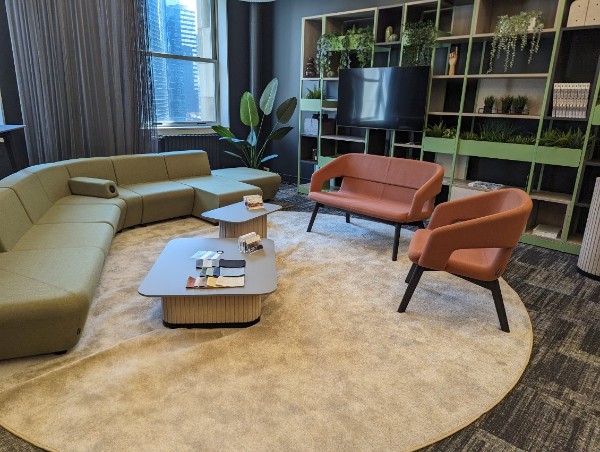When it comes to driving employee efficiency and satisfaction, the impact of productive office design is often underestimated. Yet studies show that layout, lighting, and furniture placement can directly influence focus, collaboration, and morale. At Cube World USA, we’ve seen how intentional planning and creative design choices turn everyday workspaces into powerhouses of productivity. In this article, we’ll break down how layout decisions—from desk arrangement to lighting—can elevate work performance.

The Psychology Behind Productive Office Design
A well-designed office doesn’t just look good—it feels good. The physical environment plays a psychological role in how employees approach their tasks. A disorganized, cluttered, or dim workspace leads to decreased motivation and higher fatigue. Conversely, a clean, well-lit space with designated work zones encourages better focus, clearer communication, and reduced stress levels. That’s the essence of productive office design.
Desk Layout: Creating Flow and Focus
Desk arrangement is one of the most influential components of office productivity. At Cube World USA, we prioritize desk configurations that match the company’s workflow. Here’s how layout can make or break your workspace:
- Linear layouts are best for heads-down work, maximizing floor space and minimizing distractions.
- Clustered pods encourage collaboration between small teams while keeping noise levels manageable.
- U-shaped or L-shaped desks provide private working zones within open floor plans, improving focus.
Spacing also matters. In a productive office design, desks should be spaced far enough apart for comfort, but close enough to encourage seamless communication. Too much density can feel chaotic; too little can hinder team synergy.

Lighting: The Silent Productivity Driver
Lighting is a non-negotiable in productive office design. Natural light enhances mood, energy, and alertness. Employees in naturally lit spaces report greater happiness and productivity than those in fluorescent environments. When natural light isn’t available, layering light sources—ambient, task, and accent—creates a more inviting and functional atmosphere.
Tips for lighting a productive office:
- Maximize window access for natural sunlight.
- Use LED lighting with adjustable brightness to reduce eye strain.
- Add desk lamps or floor lighting for task-specific zones.

Zones for Focus and Collaboration
Employees don’t just need a place to sit—they need the right kind of space to do different types of work. A key feature of productive office design is zoning: strategically allocating areas for individual focus, small team huddles, client meetings, and social breaks. These zones promote structure and reduce interruptions.
Examples of zones in a productive layout:
- Quiet zones with acoustic panels for deep focus work
- Open lounges for casual brainstorming sessions
- Breakout areas for recharging, often with softer furniture and warmer lighting
We’ve helped businesses rework their layouts to integrate zones without needing full renovations—just clever use of partitions, rugs, and furniture choices.

Storage and Organization: Less Clutter, More Output
Cluttered desks lead to cluttered minds. In a productive office design, storage is both practical and intentional. Whether it’s under-desk pedestals, wall-mounted shelves, or concealed cabinet systems, effective organization keeps spaces clean and minds clear. Bonus: it also improves the visual appeal of the entire office.
Storage tips for productivity:
- Give every workstation personal storage access
- Use vertical space to free up floor real estate
- Incorporate shared cabinets in team zones for convenience
Furniture Matters: Ergonomics Meets Efficiency
Even the most beautiful layout falls short if the furniture isn’t comfortable. Ergonomics is a cornerstone of productive office design. Adjustable chairs, sit-stand desks, and correctly positioned monitors reduce strain and support sustained focus. Productivity isn’t just about aesthetics—it’s also about physical comfort throughout an 8-hour day.
Cube World USA offers cost-effective ergonomic solutions that balance performance with price, helping companies scale without sacrificing employee wellness.
FAQs: Productive Office Design
Q: Can you improve productivity without a complete redesign?
Absolutely. Simple changes like moving desks, improving lighting, or adding acoustic panels can drastically boost output without needing a full remodel.
Q: What’s the biggest productivity killer in office design?
Lack of zoning and poor lighting. When employees have no separation between focus and collaboration spaces, productivity drops fast.
Q: How can small offices implement productive design?
Even compact offices can create zones using furniture, partitions, and lighting. Cube World USA specializes in maximizing small spaces with big results.
Design Your Office to Perform
Every square foot of your office can work harder when it’s designed with intention. From layout and lighting to furniture and flow, productive office design boosts morale, improves communication, and drives results. At Cube World USA, we help businesses of all sizes create workspaces that do more—without spending more.
Ready to upgrade your workspace? Contact us today for a consultation, and let us help you transform your layout into a performance-driven environment where productivity thrives.

